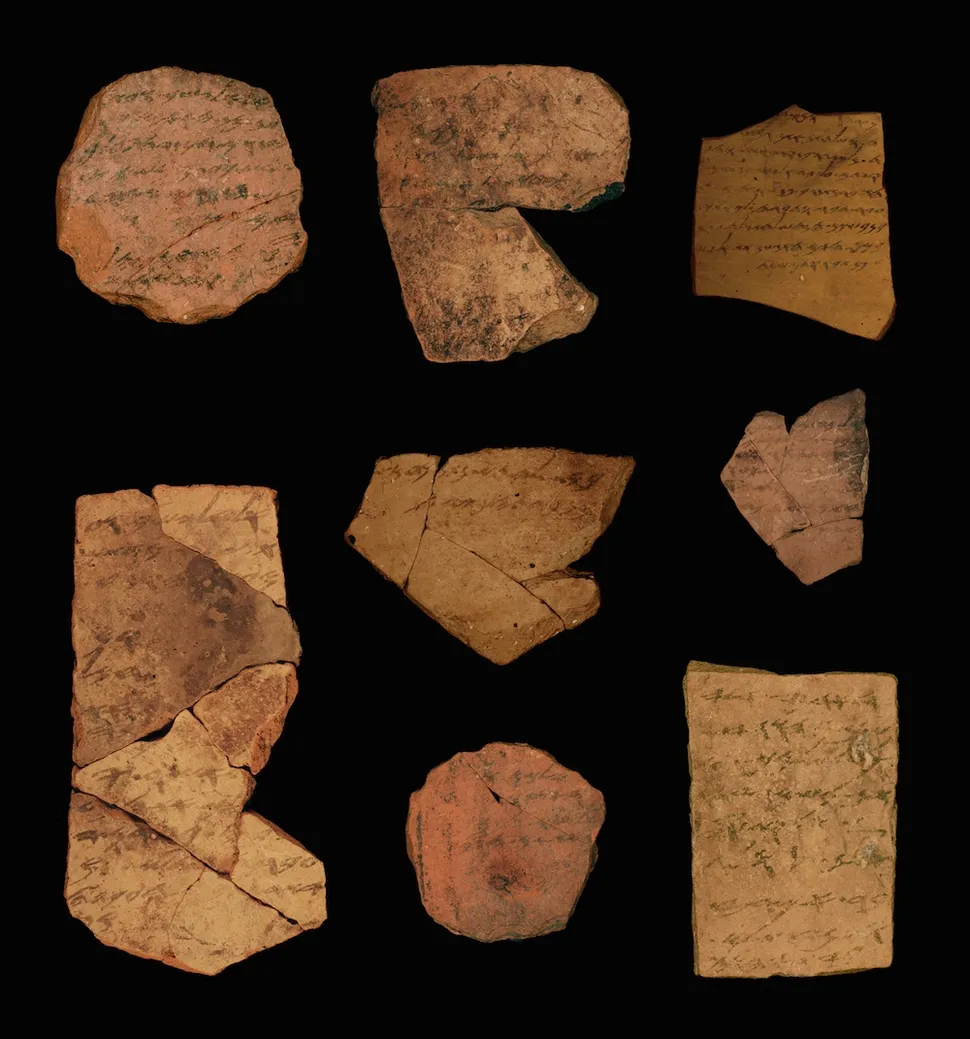Key parts of the Old Testament may have been compiled earlier than some scholars thought, suggests a new handwriting analysis of text on pottery shards.
The shards, found at a frontier fort dating to around 600 B.C., were written by at least six different people, suggesting that literacy was widespread in the ancient kingdom of Judah, said study co-author Israel Finkelstein, an archaeologist and biblical scholar at Tel Aviv University in Israel.
"We're dealing with really low-level soldiers in a remote place who can write," Finkelstein told Live Science. "So there must have been some sort of educational system in Judah at that time."
The writing shows that the kingdom had the intellectual resources to write and compile large chunks of the Old Testament during this period, he added.
Biblical history
Religious scholars have long fiercely debated when the Bible was written. Up until around the middle ages, people believed the Bible was written almost in real-time (as events were occurring).
Text in the Bible mentions scribes and literate officials for the kingdom of Judah, which remained a state from roughly the 10th century B.C. to 586 B.C., when the Babylonian king Nebuchadnezzar laid waste to Jerusalem, destroyed the temple and forced most of the Jewish elites into exile in Babylonia. So scholars assumed the text must have been written prior to the destruction of the temple.
But that line of reasoning assumed the biblical accounts were historically accurate. Another possibility is that those details about literate people were anachronisms inserted by later writers based on their own cultures, Finkelstein said. In recent years, one camp of scholars has pushed for a later date for the compilation of the Old Testament, with some even arguing the compilation occurred centuries later, when the Greeks or Persians ruled in what is now Israel, Finkelstein said.
He said he and his colleagues realized there might be a different way to address the question. Decades earlier, archeologists had uncovered archaic Hebrew ink inscriptions on ostraca, or pottery shards, from a frontier fort called Arad, a remote garrison located far away from Judah's central city, Jerusalem. Finkelstein said he wondered whether these inscriptions, which were written over the span of a few months in 600 B.C., could reveal how many people could read and write at the time.
Widespread literacy
To answer that question, Arie Shaus, a mathematics and archaeology doctoral candidate at Tel Aviv University, along with Shira Faigenbaum-Golovin, an applied mathematics doctoral candidate at the university, and colleagues, relied on machine learning. They used computer programs to scan digital images of the text, systematically fill in missing lines of text and analyze each stroke. Finally, the computer algorithms compared the script on each of the 18 inscriptions to see whether they were written by the same hand. (The ancient Hebrew text was written in an Iron Age script that is no longer used.)
All told, at least six different people wrote or read the script on the ostracas, including individuals ranging in rank from the commander of the fort, a man named Malkiyahu, all the way down to the deputy quartermaster, a soldier with a low rank, below the person running the fort's storage depots, the researchers reported today (April 11) in the journal Proceedings of the National Academy of Sciences. While none of these inscriptions were Shakespeare, most were written with proper spelling and syntax, the researchers found.
"This is really quite amazing," Finkelstein said, "that in a remote place like this, there was more than one person, several people, who could write."
What's more, other border forts have similar ostraca, suggesting that writing at that time was widespread, at least within the Judahite army, the researchers reported. Other archaeological evidence suggests that no more than 100,000 people lived in Judah at the time. Together, these lines of evidence suggest that a substantial fraction of the population (possibly several hundreds of people) could read and write, Finkelstein said.
Early biblical compilation
In order for so many low-ranking soldiers to be able to read and write, there must have been some kind of Judahite educational system, Finkelstein said.
That, in turn, suggests there were enough literate people at that time to compile some portions of the Old Testament, such as the Book of Deuteronomy, parts of Genesis, and the books of Joshua to 2 Kings, Finkelstein said.
By contrast, after the destruction of the first temple, when Israel's educated people were either killed or exiled to Babylonia, there is not so much as a pottery shard, seal or stamp with a single piece of writing from the region for more than 200 years, Finkelstein said. This suggests it's much less likely these books were compiled after the temple's destruction, he said.
The findings are very important and dovetail with other lines of research, said Christopher Rollston, a Near East scholar at George Washington University in Washington, D.C. There is no doubt that the elites in Judahite society could read and write around 600 B.C., Rollston said.
"In fact, I have argued in print that the literacy of elites (scribes, high governmental and religious officials) is already present by circa 800 [B.C.]" Rollston told Live Science in an email.
However, not everyone agrees with all of the paper's assumptions. While the notion that many could read and write in the Kingdom of Judah during the seventh century B.C. is widespread, "I do not share the authors' opinion that literacy among the elite declined after the seventh century [B.C.]," said Ernst Axel Knauf, a theology scholar at Bern University in Switzerland, who was not involved in the study.
What Do We Do With Calvinism?
-
COLLEEN TINKER | Editor, Proclamation! Magazine | Shortly after we left
Adventism I encountered one of Christianity’s ongoing discussions—a
discussion abo...
8 hours ago






































No comments:
Post a Comment